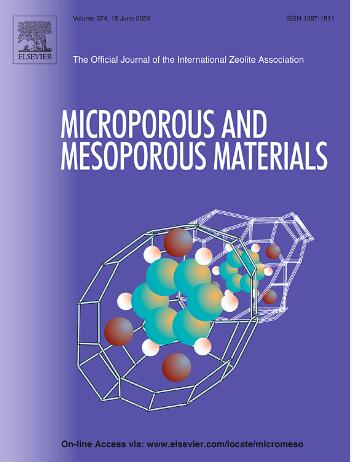Granulated hierarchical zeolites − novel pathways for utilizing bio-1,2-propanediol in the synthesis of practically important N-heterocycles
IF 4.8
3区 材料科学
Q1 CHEMISTRY, APPLIED
引用次数: 0
Abstract
In this paper, the catalytic properties of novel granulated hierarchical (micro-meso-macroporous) zeolites H-Yh and H-ZSM-5h in the reaction of aniline and bio-1,2-propanediol are investigated. The influence of shape selectivity, textural and acid characteristics of zeolites on their activity and selectivity in the above reaction is shown. For the first time it was established that zeolite H-Yh was the most effective for obtaining 2-methyl-3-n-propyl-1H-indole 1 (yield 52 %), while 3,4-dimethyl-1-phenyl-1H-pyrrole 2 was obtained predominantly over zeolite H-ZSM-5h (yield 54 %). The conditions for compounds 1 and 2 with the maximum yield were determined. Possible pathways of the obtaining products are proposed, with consideration to the type, concentration and strength of acid sites, as well as the structural features of zeolites.

求助全文
约1分钟内获得全文
求助全文
来源期刊

Microporous and Mesoporous Materials
化学-材料科学:综合
CiteScore
10.70
自引率
5.80%
发文量
649
审稿时长
26 days
期刊介绍:
Microporous and Mesoporous Materials covers novel and significant aspects of porous solids classified as either microporous (pore size up to 2 nm) or mesoporous (pore size 2 to 50 nm). The porosity should have a specific impact on the material properties or application. Typical examples are zeolites and zeolite-like materials, pillared materials, clathrasils and clathrates, carbon molecular sieves, ordered mesoporous materials, organic/inorganic porous hybrid materials, or porous metal oxides. Both natural and synthetic porous materials are within the scope of the journal.
Topics which are particularly of interest include:
All aspects of natural microporous and mesoporous solids
The synthesis of crystalline or amorphous porous materials
The physico-chemical characterization of microporous and mesoporous solids, especially spectroscopic and microscopic
The modification of microporous and mesoporous solids, for example by ion exchange or solid-state reactions
All topics related to diffusion of mobile species in the pores of microporous and mesoporous materials
Adsorption (and other separation techniques) using microporous or mesoporous adsorbents
Catalysis by microporous and mesoporous materials
Host/guest interactions
Theoretical chemistry and modelling of host/guest interactions
All topics related to the application of microporous and mesoporous materials in industrial catalysis, separation technology, environmental protection, electrochemistry, membranes, sensors, optical devices, etc.
 求助内容:
求助内容: 应助结果提醒方式:
应助结果提醒方式:


